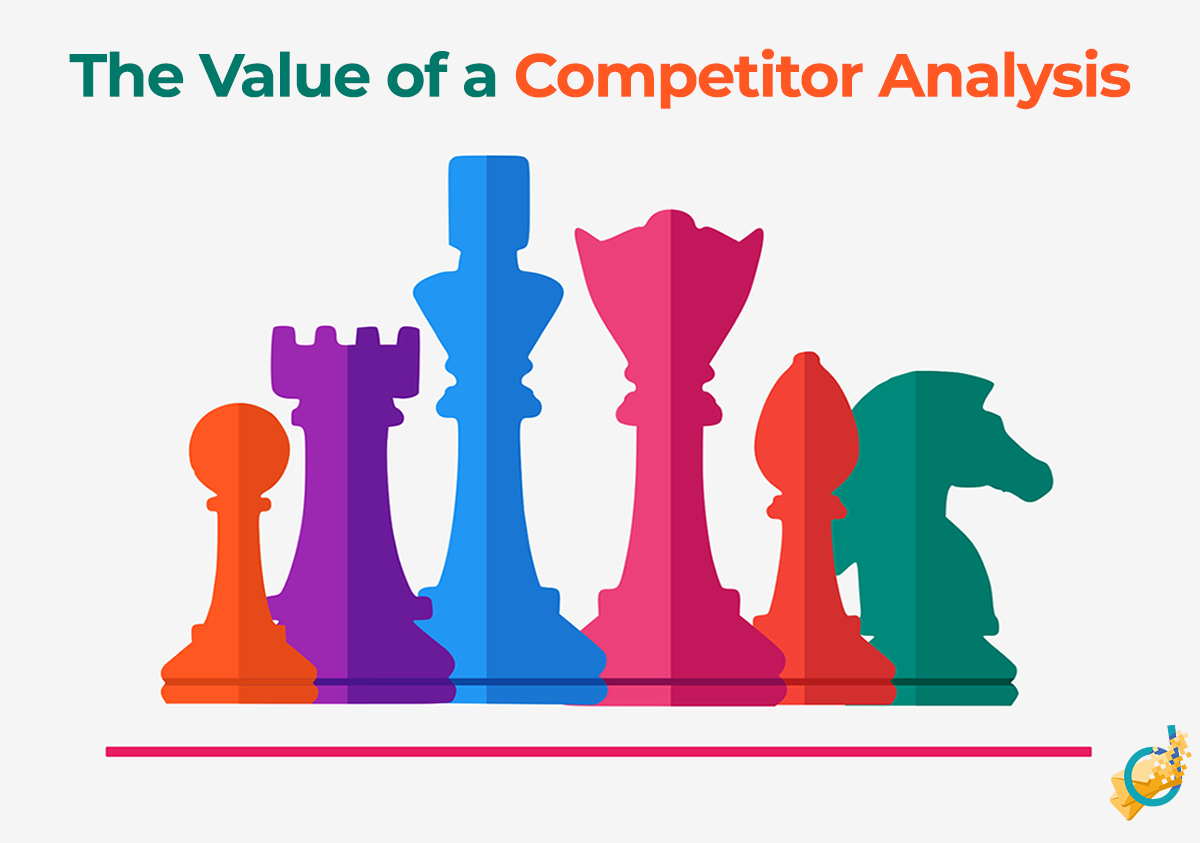What makes a marketing campaign successful?
Is it the offer? That helps.
Is it the ad copy? It’s hard to succeed without good copy, sure.
Is it the creative? The targeting? Optimizations?
Yes, yes and yes.
But before you have any of that, before you’ve written anything, before you’ve made an image, what do you need?
You need data. Data about markets, data about your audience. And, perhaps even more importantly, you need data about your competition.
Enter one of our most tried-and-true of processes: the competitor analysis.
What Is a Competitor Analysis?

A competitor analysis is exactly what it sounds like. It’s a systematic attempt to analyze and understand what your business’ competitors are doing to achieve their marketing objectives.
What a competitor analysis looks like on the ground, of course, depends on your needs:
It can be a simple and straightforward lookthrough of your competitions’ websites.
Or it could be a thorough, data-driven analysis that makes use of the absolute best tools in the industry.
Which approach you take depends on your needs – and we’ll come back to that a little later.
Understanding the Landscape

The value of a competitor analysis should speak for itself.
Understanding what another company is doing can help structure your own objectives.
Seeing another company’s work can help you find gaps in the market, and fill that space. Are none of your competitors running Facebook ads? Are they running Google ads? How are they doing in organic search?
You can also gain a lot by looking at what everyone else is doing. If, for example, you have an idea for an ad, and see someone else running with that idea….
And it’s actually terrible…
Then you know better than to try that in a live environment.
Researching your competitor isn’t just about ads, though. It’s about understanding their entire strategy.
How do they do their business? What does their workflow look like? How much of that can you glean from looking through their online marketing materials?
And how does that stack up to you? Do you think your process is better? Easier? Cheaper? What should you change to compete with them?
Getting Inspired

Sometimes known cynically as “stealing ideas”…
Whether you’re in the middle of a project or just starting out, one of the worst problems to have in marketing is a lack of ideas.
So, what can you do?
Look at what everyone else is doing, of course.
While you can’t get your competitor’s data by looking at their materials, it can give you an idea of what people have tried, and how long they’ve been trying it.
A neat function of the Facebook Ad Library, for example, is the fact that it will tell you how long an ad has been running. So if that great ad you like has been going on for a few months, you can guess that it’s probably working. That gives you an idea of how a similar sort of ad would run.
The “How” of a Competitor Analysis

The way in which you conduct an analysis depends on your marketing needs. If, for example, you’re trying to break into a relatively competitive market as a complete nobody, you’re going to want all the information you can get.
A thorough competitor analysis is data-driven and systematic. One of our favorites at DME Digital is this analysis created by the folks at ahrefs. It’s great for proving worth to a client, and provides helpful insights to guide SEO strategy.
Spreadsheets might not be your thing, but nothing compares to organized data when it comes to developing a marketing strategy.
This is only one example of a competitor analysis, however. Depending on your niche, budget and resources, you may need something entirely different. There’s no one way to conduct this sort of research.
What is certain, however, is that understanding your competitors is crucial to developing a business plan.
Ultimately, the type of data you want to collect depends entirely on what your marketing strategy looks like. That ahrefs outline, for example, is great for SEO. Not so great for social media or paid search.
Deciding which channels you want to use is, of course, another topic altogether. But what you choose determines what you need to collect.
For paid search research, you would want to collect your keyword data – much like a normal campaign – but you also want to pay attention to what ads are already running. You could, for example, lineup a column in your keywords spreadsheet and add a check for whether or not competitors’ ads pop up for each keyword. This will allow you to determine openings in the market. Places you can insert yourself with little-to-no competition.
All things considered, what we recommend for marketing is to gauge the landscape you’re entering into, and then determine how detailed you want to get.
If, for example, you’re in an area with only a few competitors who aren’t doing very much, you probably don’t need to spend a huge amount of time conducting research.
That said, knowledge is power in marketing. Knowing what’s out there prepares you to systematically outpace each of your competitors, positioning yourself to provide better services to more people.
Now, mind you, we know not everyone is a digital marketer. But perhaps they should be.












Leave a Reply